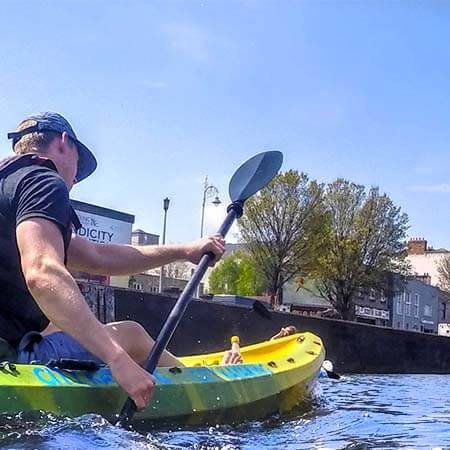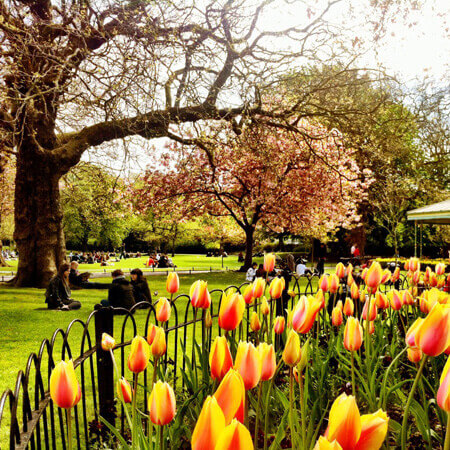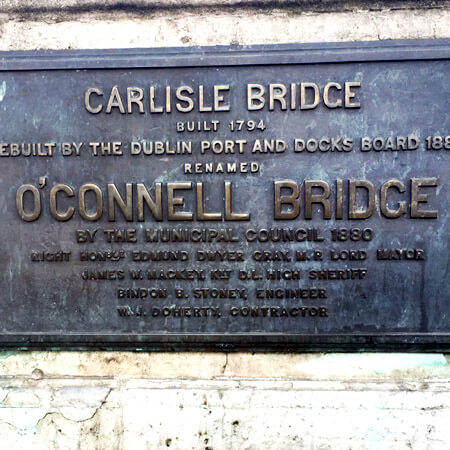An introduction to Dublin’s bridges
From Lucan, where the Liffey gently curves toward Dublin City, to the point where it meets the sea on Dublin’s eastern fringe, the river boasts some 24 bridges. And there are fascinating stories to tell about each of them…
The youngest and the oldest
The newest of the Liffey bridges is the Rosie Hackett Bridge of 2014. A bridge of its time, built of stainless steel and concrete, it caters for the living city and provides a crossing for both pedestrians and public transport.
It is the only bridge within the city’s limits named for a woman. And, in that name, there is a kernel of the history of the modern state and the tale of a heroic woman.

Rosie Hackett Bridge. Image by William Murphy, CC BY-SA 2.0
Rosie Hackett was a founding member of the Irish Women Workers’ Union, supported strikers during the 1913 Dublin Lockout and was later involved in the 1916 Easter Rising as a member of the Irish Citizen Army.
Further inland, the oldest bridge straddles the Liffey in the city’s western suburb of Chapelizod. This four-arch stone bridge dates back to 1753 and has royal connections of old, as well as a more modern, Joycean inspired moniker: The Anna Livia Bridge.
A once record-breaking bridge
The Dublin Liffey’s most far-flung crossing is the Lucan Bridge. Completed around 1814, it is a timeless limestone structurem with cast iron balustrades. It occupies a site where a bridge has forded the river since at least 1200.
Then, nestling around the stretch of river which flows by the site of the old city is the graceful trio of the O’Donovan Rossa, Mellows and Father Mathew bridges.

Samuel Beckett Bridge. Image by Gabriel Ramos.
Each one is a three arch, masonry structure with Mellows, dating from 1768, being the elder statesman. Father Mathew Bridge stands at the site of what was once city’s only ford.
And O’Donovan Rossa Bridge could boast, upon its completion in 1816, of being the widest bridge in the city. It was even wider than any of London’s bridges of that time.
Bridges named after the city’s writers
Dublin’s unique literary tradition is celebrated in another trio of namesake bridges: Samuel Beckett, James Joyce and Seán O’Casey. Well-known bridge builders of times past and present are represented here too: Bindon B. Stoney, Alexander Stevens and Santiago Calatrava, to name but a few.
On the other hand, Farmleigh is Dublin’s forgotten bridge. A ghostly Victorian structure, it crosses the river Liffey in a quiet spot near the beautiful Farmleigh estate from which it takes its name. Yet, at one time, it was the embodiment of Victorian innovation and invention built from the funds of Ireland’s richest man of the time – Edward Cecil Guinness of the Guinness family.




